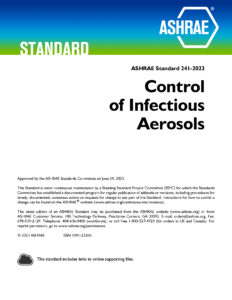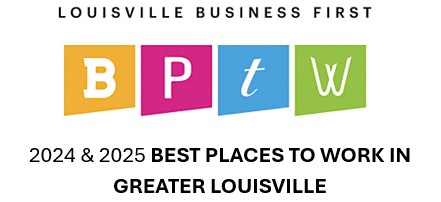In July ASHRAE published its first ever standard developed specifically around reducing the risk of infectious aerosol transmission in buildings.
 The implementation of this standard brings numerous benefits to occupants and promotes healthier environments.
The implementation of this standard brings numerous benefits to occupants and promotes healthier environments.
Standard 241 establishes minimum requirements to reduce the risk of airborne disease transmission, such as SARS-COV-2 virus, which causes COVID-19, the flu virus, and other pathogens in buildings like single and multi-family homes, offices, schools, and healthcare facilities.
Infectious aerosols, which are microscopic particles exhaled by individuals, can carry disease-causing pathogens. These particles are so small they can linger in the air for extended periods and pose a risk when inhaled. By adhering to Standard 241, building owners and operators can effectively reduce exposure to various pathogens, viruses, and other disease-causing agents that inflict significant personal and economic damage each year.
The most important thing Standard 241 does is to establish what they call “equivalent clean air” delivery requirements for different types of spaces. A building has a minimum air quality value that can be met by providing outdoor air to dilute infectious aerosols, filtering indoor air to remove them, or using other technologies to inactivate them.
The standard applies to new and existing buildings and major renovations and provides requirements for many aspects of air system design, installation, operation, and maintenance.
A prerequisite for meeting Standard 241 is that minimum indoor air quality be provided by complying with the applicable version of ANSI/ASHRAE Standard 62.1, ANSI/ASHRAE Standard 62.2, or ANSI/ASHRAE/ASHE Standard 170 at the time of construction or major renovation.
Important topics addressed in the standard:
- Infection Risk Management Mode (IRMM) – Establishes requirements for an infection risk management mode (IRMM), which applies during identified periods of elevated disease transmission risk. Authorities having jurisdiction can determine when the enhanced protections of Standard 241 are required. Resilience (the ability to respond to extreme circumstances outside normal conditions) in indoor air quality control design and operations is introduced.
- Requirements for Equivalent Clean Airflow Rate – Sets requirements for equivalent clean airflow rate target per occupant of pathogen free air flow, reducing the risk of infection.
- Requirements for Use of Filtration and Air Cleaning Technology – Provides extensive requirements for use of filtration and air cleaning (such as HEPA filters, air ionizers, or UV lights) to achieve equivalent clean airflow requirements and be cost effective effectively and safely.
- Planning and Commissioning – Provides assessment and planning requirements for being ready for the times when there is an event with increased disease causing pathogen transmissions. The standard has a building readiness plan, that documents procedures for assessing existing or new HVAC systems to determine if they are working properly and attributing to the equivalent clean air delivered to spaces.

This is a new and powerful concept in indoor air standards because it allows the user to choose among different options to develop the best situation for their circumstances. For example, increasing outdoor air above the levels required for normal operation may be a poor solution because of the cost of conditioning it or if outdoor air quality is poor where the building is located. The standard also provides strong requirements for determining the performance of air cleaners; addresses safety, which is important because some air cleaners produce byproducts that are potentially harmful; and sets requirements for assessment and planning, operation and maintenance of systems that control infection risk.
In order to make any real headway, the standard must make its way into building codes and day-to-day building operations. A likely path for adoption is referencing the standard in the requirements of large government landlords. Cities, states, and the federal government take longer to adopt changes, but it is already happening. It has been announced recently that New York City is considering groundbreaking indoor air quality regulations that could reference Standard 241.
ASHRAE Standard 241, Control of Infectious Aerosols can be purchased at ashrae.org/241.



